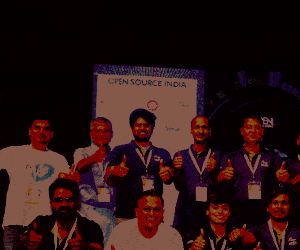The scrutiny of natural phenomena, organisms, structures and such to solve problems, create better designs or develop new products, is developing into an organised field of study. In fact, universities such as the MIT have included biomimetics as part of their curriculum.
Delving upon whether bio-inspiration is by chance or by design, we can outline several approaches to nature inspired technology development.
Approach 1
“This is interesting; let me study it in detail.”
Picking up a stray clue and turning it into a discovery or invention is one of the most admirable things to do. An apple fell on Newton’s head and he discovered gravity, we say. However, Newton would admit it was not that easy! He discovered gravity because he questioned why the apple fell, and pursued to study the reasons behind it.
A researcher sees something interesting, is inspired by it, studies it further, and tries to apply that knowledge to develop a theory, design or produce or whatever other fragment of technology. That is, the researcher is not in search of an idea, but chances upon one, and decides to pursue it.
The sculptured thin film mentioned by Dr Lakhtakia is one such natureinspired technology. About two decades ago, he observed a mineral called ulexite which has a fibrous structure. It is often called TV rock because of its ability to transmit images as on a television screen, when cut and polished. Intrigued by this, Dr Lakhtakia asked a colleague whether such fibrous structures could be made with thin-film technology, and was glad when told that they could be!
He decided to lay down the fibres of the thin film at an oblique angle, to try and find out the mathematical basis of its dielectric, magnetic and magnetoelectric properties. Then, he decided to shape the fibres so that they were not straight. He found that the chirality, or left- or right-handedness of the film, affects the transmission of light. If the handedness of the light and the film are same, it can be very bright. If they are opposite, the transmission is low. He also showed that it was possible to shift the colour of the film after deposition by heating the film.
The sculptured thin films that resulted from Dr Lakhtakia’s research have a large range of uses including light filters, fluid concentration sensors, biosensors, electrical switching, lab-on-a-chip, bioreplication and bio-scaffolding (as a substrate for cell growth). Their use in the reproduction of biological surfaces such as the multifaceted eyes of house flies, for possible light-harvesting purposes, etc, is quite interesting.
Approach 2
“I’ll keep studying nature; I’m sure it’ll lead to great things!”
In a report published in the National Geographic, Dr Andrew Parker, a proponent of biomimetics and a research fellow at London’s Natural History Museum and the University of Sydney, exclaimed that he could come up with 50 biomimetic project ideas merely by observing the preserved specimen in a museum. Indeed, when he saw a 45-million-year-old fly trapped in amber in a museum in Warsaw, Poland, he noticed that it had microscopic corrugations that reduced light reflection. This observation is now engineered into solar panels.
Parker is the kind of person who would walk along the coastline consciously looking at the environment, the natural phenomena and the creatures, searching for a spark to solve problems in engineering, materials science, medicine and other fields. Apparently, his study of antireflective coatings in moth eyes and iridescence in butterflies and beetles has led to an anti-counterfeiting technique and brighter screens for cellular phones, respectively.
So, in a very challenging approach some researchers such as Dr Parker keep studying nature, cataloguing the information and constantly calculating whether it can solve any related engineering problem. This requires a very keen mind, knowledge of many science and engineering disciplines, and a strong will—because hundreds of ideas and years of study might lead to just a few breakthroughs.
[stextbox id=”info” caption=”Self-repairing solar cells”]
In a very recent example of nature-inspired breakthroughs, a team of researchers at MIT, led by Prof. Michael Strano, has unveiled the logic for self-repairing solar cells, inspired by how plants perform photosynthesis. The design involves carbon nanotubes studded with phospholipid disks. The resulting photo-electrochemical solar cells are believed to be selfrepairing and twice as efficient as the best solid-state solar panels available today.
Engineers try to prevent degradation in solar cells by using solid-state inorganic materials. Nature, on the other hand, does not try to prevent degradation, but uses various self-healing processes to anticipate and repair the damage caused to liquid state organic materials. The process of photosynthesis includes mechanisms to periodically break down a plant’s chemical-based engine into basic building blocks, renew the components and reassemble the engine. This process happens almost hourly.
Strano’s design tries to mimic the refurbishing activity by using synthetic disk molecules called phospholipids, each of which carries its own internal reaction centre to convert light into an electric current. When dissolved in a solution containing carbon nanotubes, the disks self-assemble around them. Since carbon conducts electricity better than metals, the nanotubes enhance the transport of electrons freed inside the disks by their exposure to sunlight. Inside each disk there is a photosynthesis-like cyclical mechanism using seven different compounds that self-assemble into harvesters of light. By adding a surfactant, the seven-compound assembly can be broken apart into its original components. By forcing the whole solution through a filter that removes the surfactants, the original building blocks again self-assemble into a refurbished solar cell, much like the process followed by plants.
Inspired by the same process in plants, a team led by Jong Hyun Choi of Purdue University has also created artificial photosystems using optical nanomaterials to harvest solar energy that is converted to electrical power. This team’s design exploits the unusual electrical properties of structures called single-wall carbon nanotubes, which they use as molecular wires in light-harvesting cells.
[/stextbox]










